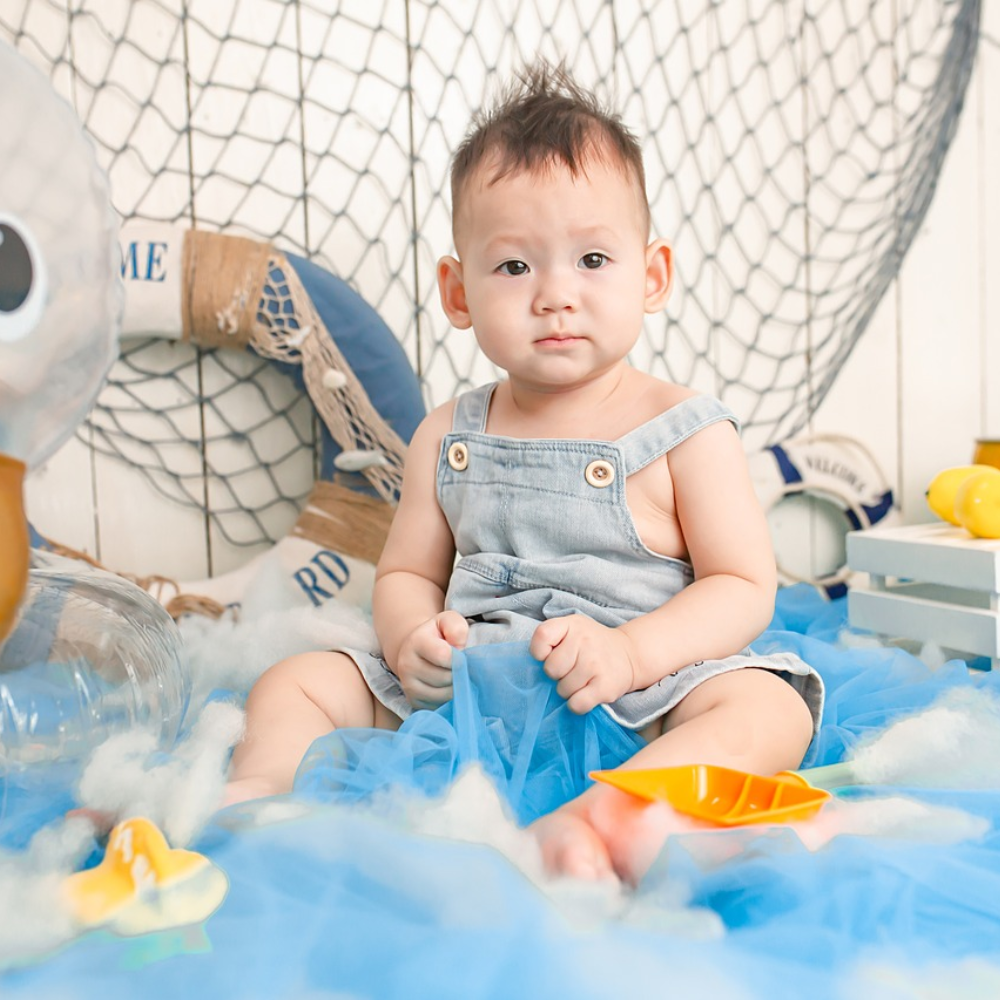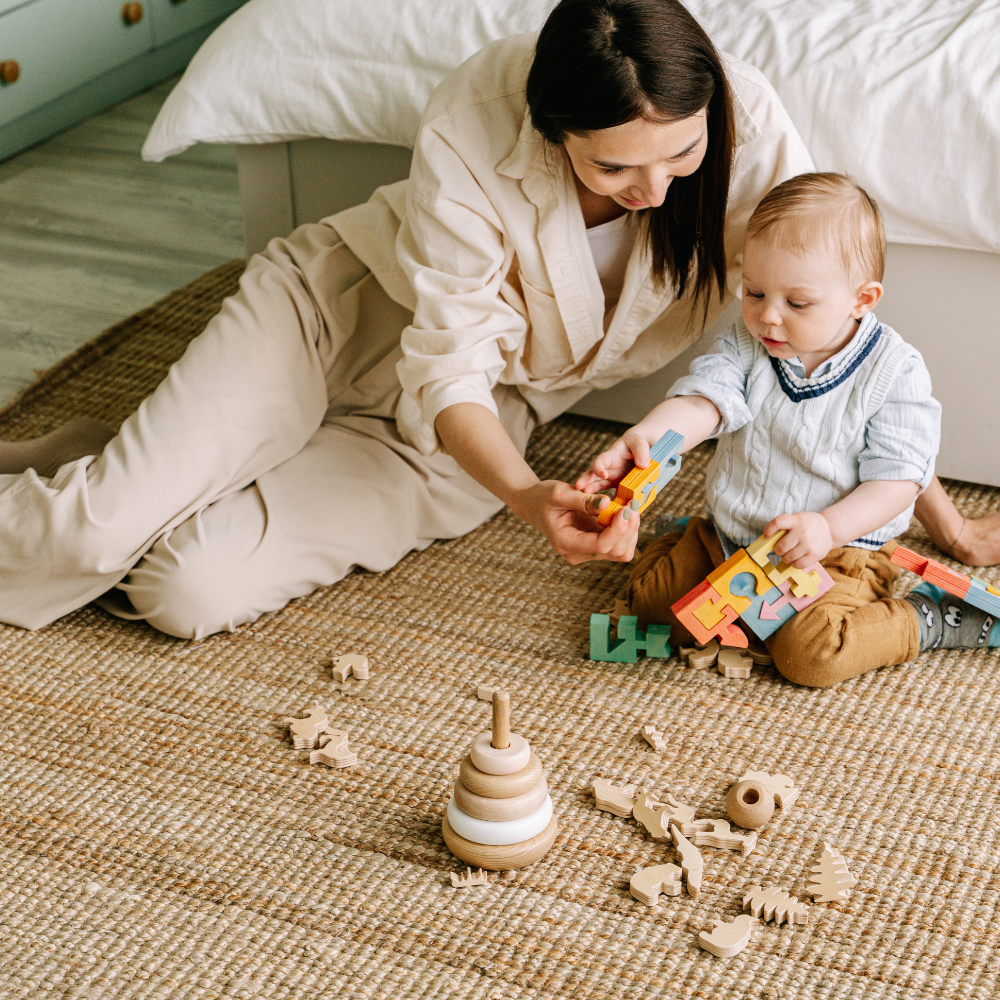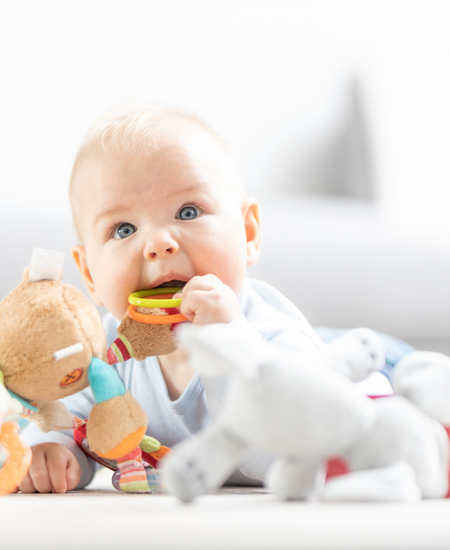Babies are constantly learning and growing, from the moment they are born. One of the many milestones parents eagerly anticipate is when their little one starts to grab toys. This may seem like a simple action, but it represents a major developmental milestone for babies.
The ability to grasp objects not only makes playtime more fun but also helps with fine motor skills and hand-eye coordination. But at what age can parents expect their baby to start grabbing toys? In this article, we will explore the factors that influence when babies start to grab toys, as well as some tips for helping them develop this important skill.
Why Is Grabbing Toys Important for Babies?
Grabbing toys may seem like a simple action, but it actually plays an important role in a baby's development. This skill helps babies to improve their hand-eye coordination and develop their fine motor skills. As they reach out for toys, babies start to learn how to control the movements of their hands, wrists, and fingers.
Furthermore, grabbing toys also stimulates a baby's senses. When they touch different textures and shapes, they are able to explore the world around them through their sense of touch. This not only aids in their cognitive development but also provides sensory stimulation which can be calming and enjoyable for babies.
In addition, grabbing toys is an early form of problem-solving for babies. They learn to use their hands and fingers to manipulate objects, which can help them understand cause and effect. This skill also prepares them for more complex tasks such as using utensils or holding a pencil in the future.
Factors that Influence When Babies Start Grabbing Toys

Babies develop at their own pace, so it's important to remember that there is no specific age when all babies will start grabbing toys. However, there are some common factors that can influence this milestone. Here are a few to consider:
Motor skill development
Motor skill development is a crucial factor in determining when babies grab things and toys. Initially, babies exhibit reflexive movements, which gradually evolve into more purposeful actions as they grow. By around three to four months, they begin to develop the ability to reach out and grasp objects within their sight and reach.
This is a result of strengthened muscles and improved coordination. As their fine motor skills advance, babies can grasp toys with increasing precision and control.
Parents can encourage this development by providing age-appropriate toys that are easy to hold and manipulate, and by offering plenty of supervised playtime. Interactive play, such as guiding a baby's hands to objects, can also support the natural progression of motor skills.
Hand-eye coordination
Hand-eye coordination is the ability to coordinate visual information with hand movements. This skill is closely linked to motor skill development and plays a crucial role in a baby's ability to grab toys. As they grow, babies learn to track moving objects with their eyes and use that information to guide their hands toward the object.
To support this development, parents can provide colorful and visually stimulating toys that encourage a baby's focus and tracking skills. They can also engage in activities such as rolling or throwing a ball back and forth, which helps babies practice using their hands in response to visual cues.
Gross motor development
Gross motor development refers to the physical milestones that involve large muscle movements, such as crawling, sitting, and standing. As babies develop these skills, they become more mobile and can freely explore their environment. This increased mobility allows them to reach for toys and practice grabbing them.
To help with gross motor development, parents can provide a safe and stimulating play area where a baby has enough space to move around and explore. They can also encourage tummy time, which helps strengthen neck muscles and prepares babies for reaching out towards objects.
Environmental factors
Exposure to toys and playtime opportunities also play a significant role in when babies start grabbing toys. The more time babies spend interacting with different objects, the more opportunities they will have to develop their grasping skills.
Parents can provide a variety of age-appropriate toys for their baby to explore and engage with. This can include soft toys, rattles, blocks, and other objects that are safe for a baby's age and development level.
Furthermore, creating a nurturing environment where playtime is encouraged can also help stimulate a baby's curiosity and desire to reach out for objects. Spending quality time playing and interacting with a baby can also provide valuable bonding opportunities for both the parent and child.
These environmental factors, along with a baby's natural development, all play a role in when they will start grabbing toys. By being aware of these factors and providing the necessary support and opportunities for their baby, parents can help promote this important developmental milestone.
Average Age for Grabbing Toys
While there is no specific age when all babies will start grabbing toys, the average age range is typically between 4-6 months. However, it's important to remember that every baby is different and may reach this milestone at their own pace.
Some babies may start grabbing toys as early as 3 months, while others may not show interest until they are closer to 7 or 8 months old. As long as a baby is showing progress in their motor skills and hand-eye coordination, there is no cause for concern if they haven't started grabbing toys yet.
If a parent has concerns about their baby's development, they can always consult with a pediatrician for guidance and support. Every child develops differently and at their own pace, so focusing on their growth and progress is essential rather than comparing them to others.
Also, keep in mind that the process of grabbing toys is ongoing and will continue to develop as a baby grows. As they become more coordinated and their fine motor skills improve, they will be able to grab and manipulate objects with increasing dexterity and control.
Which Types of Toys are Best for Promoting Grasping Skills And Ages?

When choosing toys to help promote a baby's grasping skills, it's important to consider their age and stage of development. Here are a few types of toys that can be beneficial:
Montessori Toys
Montessori toys are based on the philosophy of child-led learning and promote hands-on exploration. These types of toys can help develop a baby's grasping skills as they are designed to be manipulated and explored by little hands. Some examples of Montessori toys that can aid in grabbing skills include simple puzzles, shape sorters, and wooden blocks.
Montessori toys are suitable for babies aged 6 months and up, depending on their individual development level. Plus, they can continue to be beneficial for toddlers and young children as well.
Textured Toys
Textured toys are great for stimulating a baby's senses and developing fine motor skills. These toys have different tactile surfaces that encourage babies to explore using their hands. Examples of textured toys include soft plush animals with different textures or sensory books with various fabrics and materials.
Textured toys can be suitable for babies aged 4 months and up, depending on the specific toy and its recommended age range. As babies grow, they will continue to enjoy exploring different textures and using their hands to feel and manipulate them.
Sensory Balls
Sensory balls are a great way to promote grasping skills as they are easy to hold and manipulate. They also provide different textures and sensations, which can help stimulate a baby's senses. As babies reach for the balls, they develop hand-eye coordination and improve their grasping abilities.
Sensory balls are typically suitable for babies aged 6 months and up, although some may be appropriate for younger infants as well. As babies grow older, they can continue to use sensory balls for various activities such as rolling, throwing, and catching.
Soft Blocks or Stacking Toys
Soft blocks or stacking toys are ideal for grasping practice as they are easy for babies to hold and manipulate. These types of toys also help with hand-eye coordination and spatial awareness as babies figure out how to stack the blocks or pieces.
These types of toys can be suitable for babies aged 6 months and up, although some may be appropriate for younger infants as well. As babies grow older, they can continue to use soft blocks or stacking toys to build more complex structures and engage in imaginative play.
So these were some examples of toys that can help promote a baby's grasping skills at different ages and stages of development. Baby Products are important to help a baby's grasping skills develop.
Tips For Choosing the Right Toys
When choosing toys to help promote a baby's grasping skills, it's important to keep these tips in mind:
- Choose toys that are age-appropriate: As mentioned earlier, each baby develops at their own pace, so it's important to consider their individual age and stage of development when selecting toys.
- Look for toys that are easy to grasp: Babies' hands are still developing, so it's essential to choose toys that are easy for them to hold and manipulate. Avoid toys with small or sharp pieces that can be a choking hazard.
- Consider the sensory benefits: Toys with different textures, sounds, or bright colors can help stimulate a baby's senses and promote grasping skills.
- Encourage exploration and interaction: Choose toys that allow babies to explore and interact with them, rather than being passive observers. This will help promote their curiosity and development.
- Rotate toys regularly: To keep things interesting and encourage ongoing development, it's essential to rotate toys regularly and provide babies with new challenges to overcome.
The most crucial aspect of choosing toys for promoting grasping skills is to focus on ones that are safe, age-appropriate, and engaging for a baby's individual needs and abilities. By providing them with opportunities to practice their grasping skills in a fun and stimulating way, you can support their overall growth and development.
FAQs
When do most babies start grabbing things with their tiny fingers?
Most babies begin to show interest in grabbing objects between 3 to 4 months old. This is when their finger skills start to develop, and they can close their tiny fingers around objects handed to them or within their reach.
How do babies develop the ability to grasp things?
Babies develop the ability to grasp things gradually. Initially, their grasp is reflexive, but by 4 to 6 months, they start to open and close their hands deliberately to hold objects. Their coordination improves as they practice more.
What role do baby gym play in helping babies grab and hold objects?
Baby gyms are designed with dangling objects that are easy for babies to reach. These setups encourage babies to stretch their arms and try to grab objects, enhancing their motor skills and coordination from a young age.
At what age do babies start passing objects from one hand to the other?
Babies usually start passing objects from one hand to another around 6 months of age. This skill is an important milestone in the development of their hand-eye coordination and finger skills.
What does the Disease Control say about the development stages of babies grabbing objects?
The Centers for Disease Control and Prevention (CDC) provides guidelines on developmental milestones, including when babies are expected to grab and hold objects. Generally, grabbing and holding skills are expected to develop around 3 to 6 months as part of their natural growth and neurological development.
Conclusion
In conclusion, grasping skills are essential for a baby's overall development and can be promoted through various types of toys. It's important to consider the age and stage of development when choosing these toys and to provide babies with opportunities for exploration, sensory stimulation, and interaction.
By following some simple tips, such as rotating toys regularly and choosing age-appropriate options, parents can help their little ones develop strong grasping skills that will benefit them throughout their lives. So don't forget to keep these tips in mind when selecting toys for your baby!
And remember, every child is unique, so don't worry if your baby takes a little longer to develop their grasping skills – they will get there in their own time.
Subscribe to our email newsletter and unlock access to members-only content and exclusive updates.

Comments